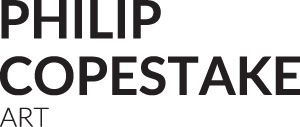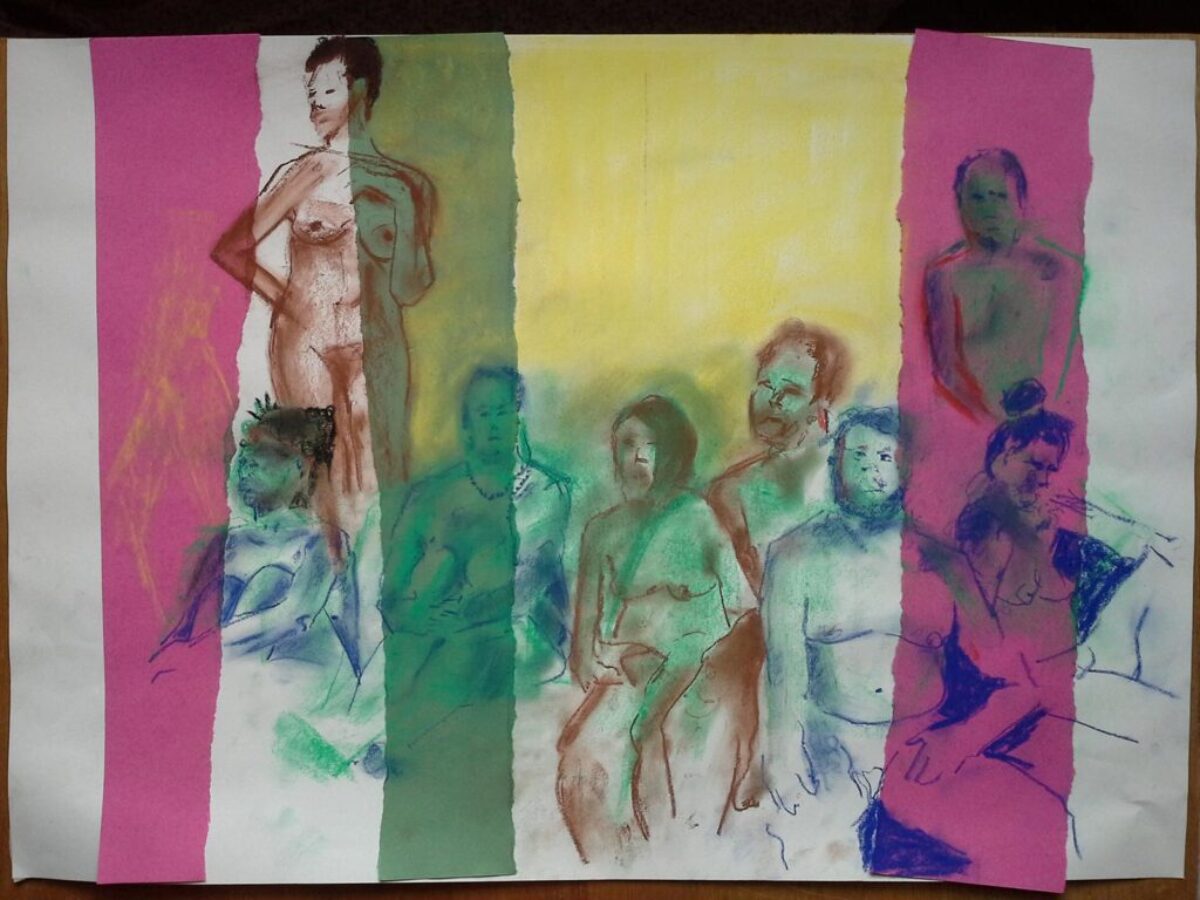A Life Drawing Journey
I first came to life drawing – drawing the figure from life – in the 1990s. I was captivated when I attended a Saturday afternoon workshop in the little studio that was above the shop in Fielders art shop in Wimbledon [sadly now closed after serving the Wimbledon community of artists for over 90 years]. I had attended some interesting still life sessions there, so was intrigued when I spotted the chance to do some ‘life drawing’. Over the following years I attended several life drawing sessions at Fielders, and also signed up for evening classes then being run at Wimbledon School of Art [now Wimbledon College of Arts – part of the University of the Arts London (ual)]. This proved fantastic experience, albeit with a quite formal – ‘art college’ – approach. It was inspiring to be among a group of equally enthusiastic artists, of all ages – from young students preparing their A-Level portfolios, to some very experience drawers indeed.
And then it stopped. For a bit, anyway. Work life got in the way, and Wimbledon School of Art stopped running their evening classes.

Some time later I discovered London Drawing, and drew regularly with them for a number of years. The text below is a blog piece I wrote for London Drawing in 2013. I feel I owe a lot to London Drawing in building the confidence to take my art practice seriously. Working with them had a direct impact on my decision to first rent a studio space. But more on that on another occasion perhaps. The piece is self-explanatory. So here is what I said back then:
* * *
‘I had not done any life drawing for well over 10 years. It was the beginning of 2012 and I was having a strong mid-life desire (crisis?) to get back to it: “if I don’t start drawing again seriously now, I may never do it!”
I Googled “life drawing in London” and discovered London Drawing. There was a drop-in class at Battersea Arts Centre, which was reasonably convenient for me. But what really caught my eye was an up-coming “Drawing Theatre” event with Spirited Bodies* where there would be “multi-models”. “Well, that should get me back into life drawing” I thought, and signed up. I managed to squeeze in one evening drop-in class, just to get my (albeit somewhat wobbly) hand back in before the February workshop. The day – again at Battersea Arts Centre – was quite an occasion. I felt a little uncertain about throwing myself back in with such a challenge. Confronted with a group of about 15 models, it was difficult to know how to start. The temptation was to focus on one body, and to draw as one might in a conventional life drawing class. But Anne [Noble-Partridge]* encouraged us to take advantage of this unique experience and try to take in the whole picture. It required a letting go. I came away from the day with a few rough sketches that I was reasonably happy with, but it was the experience itself that was something remarkable. I was certainly back drawing. But, more importantly, I had become acquainted with the Drawing Theatre and Spirited Bodies.
And I was now a little better prepared for my next encounter with the Drawing Theatre later in the year. This time we were in the Grand Hall at Battersea. This was bigger – there were perhaps 25 models. The ornate backdrop of the room provided additional material. Anne and David [Price]* are always encouraging to take in the space. To place the models in the surroundings. Use elements of the architecture to inform and drive the response on the page. I had made a conscious decision to just “go for it” this time with my art; to not be too concerned about what comes out. My drawing was freer, bolder; it spread across several sheets, and flowed from the edges. And I had my first experience of working not at an easel, but on the floor. This somehow seemed more physical – you shift your body in relation to the page; the perspective was different; and I was closer to the models. There was a real connection; an intensity that surprised and intrigued me. The large room was silent but for the sound from the large blow heaters that maintained a comfortable temperature for the models. When they were turned off at the end of each session, I realised that I hadn’t noticed their noise, and the new quietness that descended somehow seemed to add to the striking atmosphere in the room. The artists and models had been so intensely involved in what they were doing it was like some form of profound meditation.
We finished the day with an “exhibition” of some of the work we had been producing, and what really struck me was the uniqueness of each artist’s marks. There were perhaps 60 artists around the room; all in the same room; all drawing the same tableau of models. But each and every image was different. As an artist, it was both inspiring and informative.
So what next? October 2013 and I now find myself at my third Drawing Theatre with Spirited Bodies event, at St John’s church in Waterloo. I felt this was going to be quite different. First, the space was very different. St John’s is a Neoclassical church, with a large and open interior; high ceilings and an organ gallery at one end. The day had been billed as A Human Orchestration, and there would be sound. There were no easels. On entering the nave, each of us found a space on the floor and began to get our paper and drawing materials ready. This always seems like a little ritual – laying out the pencils, coloured crayons, charcoal… I’m never quite sure what I am going to use. As I took in the room, I did recognise the faces of one-or-two people sitting amongst us who had been models on previous occasions, but thought nothing of it; they were there to draw. Such as it seemed with Spirited Bodies events, artists are often models, and models artists. The stage – cushioned and covered platforms of various heights – was set before the altar. There were brief introductions from Anne and David from London Drawing, the vicar of St John’s, and Esther [Bunting]* from Spirited Bodies. Then we were to begin.
Pause…
It took a moment to realise what was going on. We were, of course, waiting for the models to enter and arrange themselves on the platform in front of us, as had happened at the previous events I had been to. But then I spotted a model, now naked, striking a pose to my left. I turned to draw. Then there was another on the far side of the room, to my right. There was another. And another. The models had indeed been interspersed between us. One by one, discreetly choreographed by Esther, they rose. Calmly and confidently removing their covering of clothes they each took up a pose. I hadn’t anticipated that the “artist” just a couple of feet before me would next rise and so swiftly become a model. To be so comfortably close, to be amongst them, allowed a bold perspective to the drawing I had never experienced before. The juxtapositions; the distances; the different poses; the movement and change as a model maybe needed to shift the pressures of the pose, made for an intriguing, if not challenging, drawing experience. We drew for perhaps 45 minutes. I am never quite sure of the timing, as the focus and intensity are all absorbing. The close came as a reverse to the opening. One by one, the models quickly dressed, and returned to sit normally again amongst us. We took a break, the art was spread in front of us and we examined the work being done.
* * *

I am familiar with the power of simple sound, but I wasn’t quite expecting what would happen next. Up on the gallery, one of the female models [whose name I now know is Christine] starts to make a powerful and evocative sound with her voice – the notes filling the void. The other models – lined up below – reply. There is some movement now, so the drawing and interpretation has to be freer – the marks on the paper somehow reflecting what was happening, both visually and aurally, among the models. They spiral inwards to form a pyramid, with Christine now joined them, and another model – Ursula I believe – at its centre, leading the “choir”. The noises – a combination of clapping, slapping, singing, phrasing, and other sounds made with the voice – A Human Orchestration – filling the church. This is a transformation. A real shift; from interpreting the form, to interpreting the experience. Sometimes difficult. What to do? What mark is that? Just make it and see how it feels!
As we share the experience again in the break – examining each other’s work laid out on the floor, you can see the progression. Some more literal, but many move now to be more abstract and lyrical.
And so we come to the third and final “performance” of the day. Now the stage before the altar is finally used. The 20-or-so models assemble themselves into a tableau across the platforms. We have an hour, but I know that that will not be long to try to capture in some way the multitude of bodies before us; the inter-relations, the occasional shift in structure as a model has to make a move. I now work fast – eye to page, marks here and shadow there, collage of coloured paper forming a back-drop to the scene. There is music in the background, but I mostly don’t hear it.
And then suddenly it is over. The models take a bow to appreciative applause. Five hours passed in a flash. The work is spread out again over the floor. From an artist’s perspective, it is again fascinating and constructive to see how others use their materials – the line, weight, flow of a curve, use of colour, size, collage and form. It always amazes me how, 40, 50 60 artists all make their individual marks. We may all be looking at one image – but there is a multitude of interpretations. Part of the experience is to let go of the powerful desire to come away with something that might be seen as conventionally “good”. It is about exploring, experiencing, experimenting – ultimately, about creating. It is what London Drawing do: creative life drawing.
It was certainly another extraordinary day. And, as usual, quite satisfyingly exhausting. As the metaphorical “final curtain closes” I am always aware of a deep emotion welling up from deep inside. An emotional experience as well as a creative one. It is almost overwhelming. It is such a privilege to be part of these unique and special days. As was pointed out at the beginning of the day at St John’s, they represent a real celebration of the beauty of the body in all its shapes and sizes. But not just the physical body, but the spiritual one, too – those Spirited Bodies.
I look forward to the next Drawing Theatre with Spirited Bodies. I am sure it will offer up something new.
Philip Copestake
October 2013’
*Spirited Bodies was founded in 2010 by life model Esther Bunting as an activist organisation that champions body positivity, feminism and personal empowerment through the practices of life modelling and life drawing.
*Anne Noble-Partridge founded London Drawing with artist *David Price in 2006 while running weekly workshops and events at Tate Modern.


